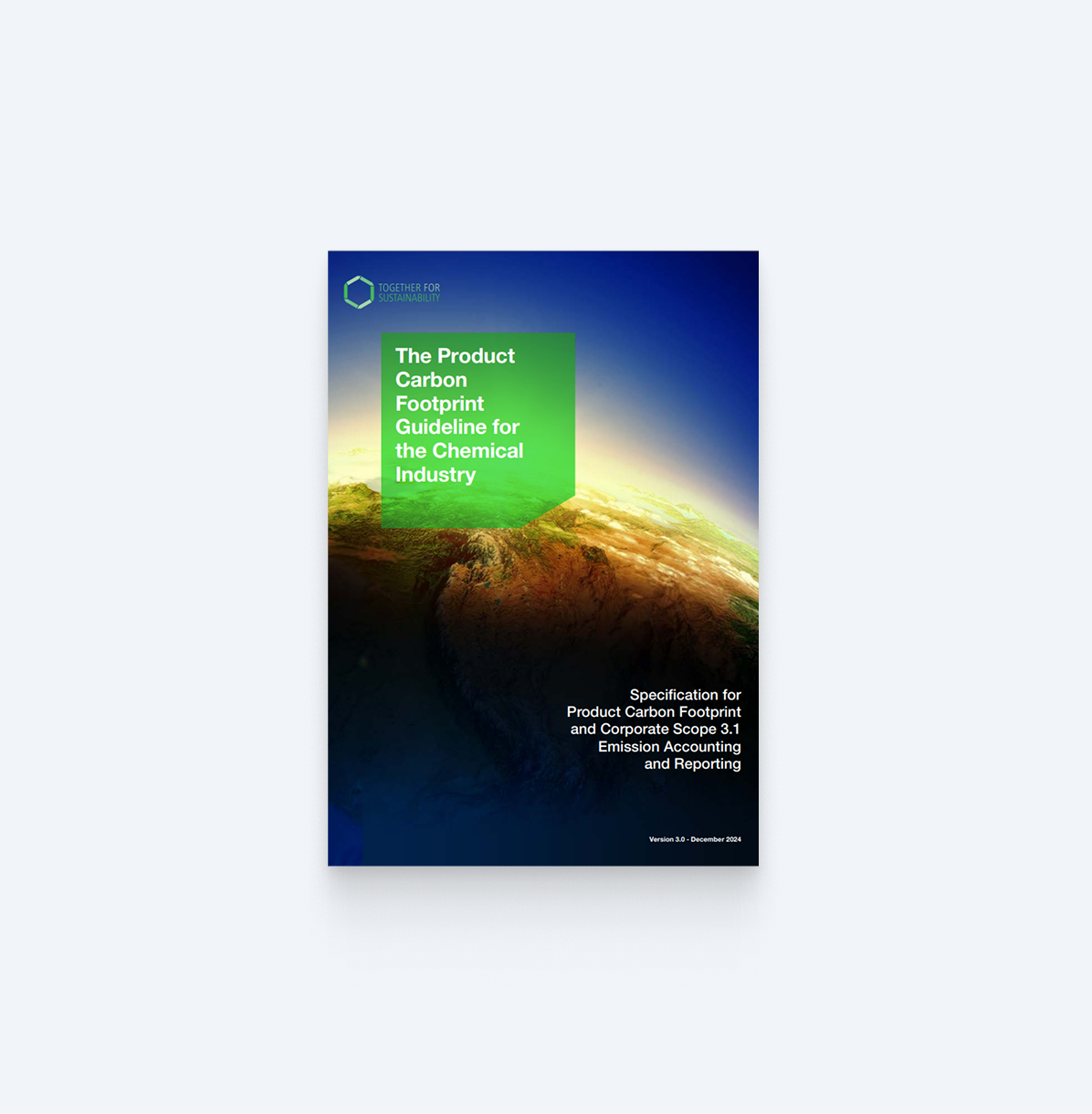The Product Carbon Footprint Guideline for the Chemical Industry
This document provides guidance in calculating PCFs and Scope 3 emissions for the chemical industry. The development was done by a group of experts from TfS member companies, supported by external experts, reviewed by companies within the chemical sector and audited by TÜV Rheinland. Existing standards and guidelines were considered and used as a basis for creating sector specific text for the chemical industry.
Biogenic emissions and removals:
TfS data model (v3.0) is aligned with PACT and so use the biogenic emissions and removals guidance as indicated in Chapter 3.3.2.4 of the PACT Methodology. The TfS PCF Guideline v3.0 refers to the data model v3.0 for PCF data exchange and will add some more content on GWP component split in next revisions
Recycling and energy recovery
From recycling: The current version of the guidance use the cut-off approach for waste treatment, however there are also some additional information, i.e. “cut-off plus”. In addition, the USE approach was introduced by TfS that can cover specific chemical recycling processes and to address them adequately
For waste to energy: The current version of the guidance recommends different options, cut-off is one of those
To align with PACT Methodology: Use the recycled content method as indicated in Chapter 3.3.2.3 of the PACT Methodology
Validity period
The current version of the guidance recommend to update PCFs at least in a 3-year cycle or earlier if major changes to the production process (>20% impact from original PCF)
To align with PACT Methodology: Follow the 3-year cycle or earlier if >10% variance criteria as indicated in Chapter 3.2.3 of the PACT Methodology
Verification
A separate document has been developed to guide PCF verification and PCF program certification. However, TfS does not prescribe to achieve a specfic level of verification for now.
To align with PACT Methodology: Follow the requirements specified in Chapter 5 of the PACT Methodology



.png)
.png)